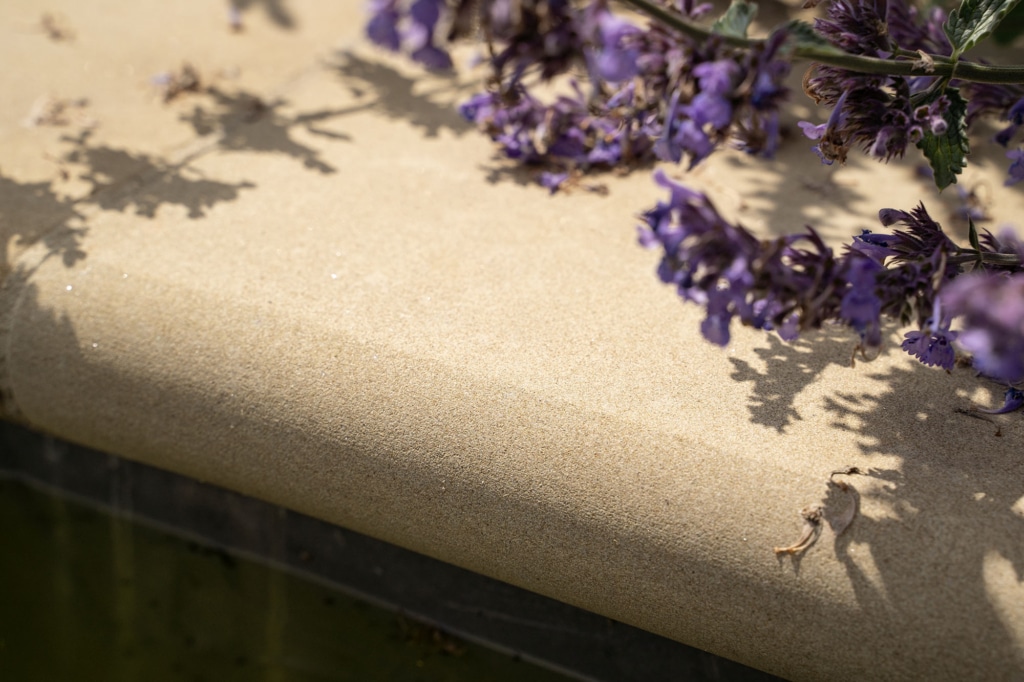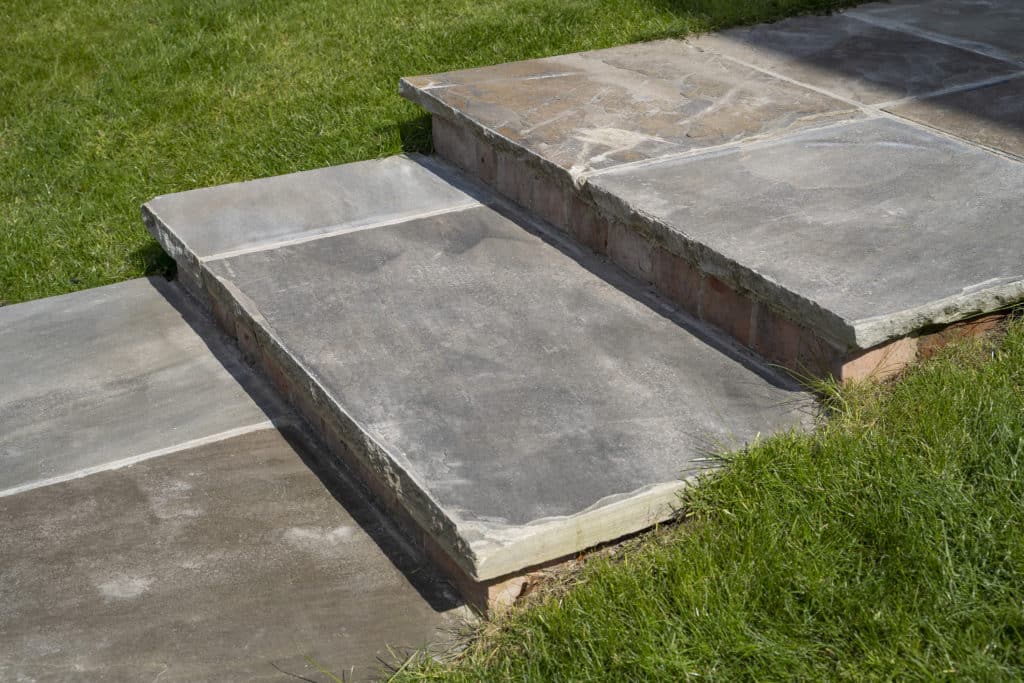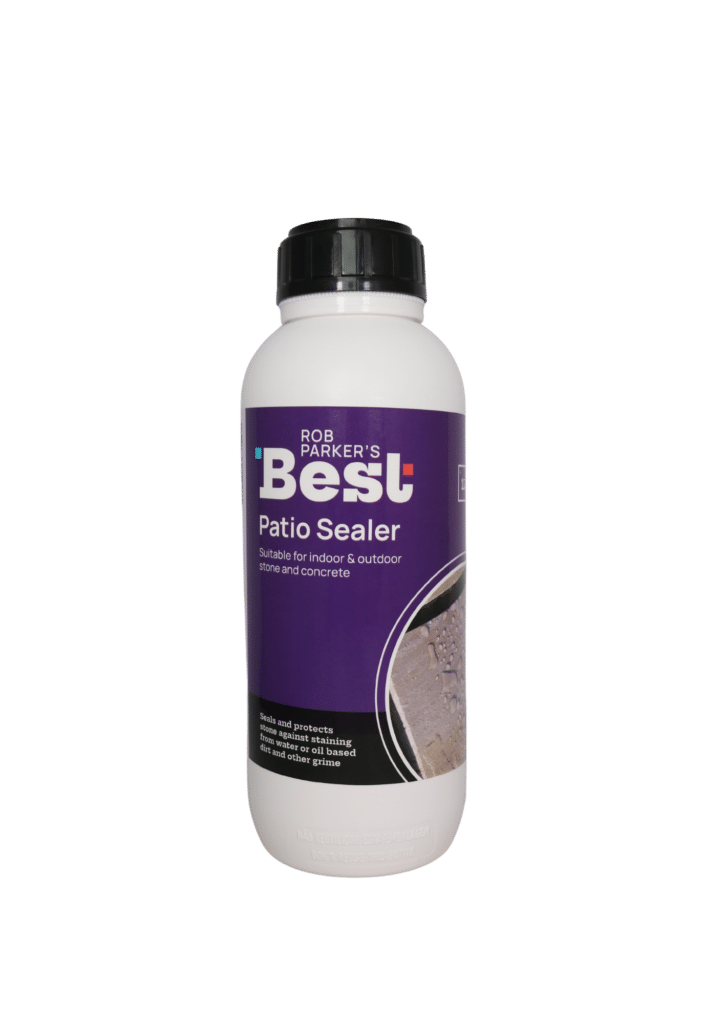Some people love the way York Stone weathers and naturally discolours over time. York Stone, generally a buff to grey sandstone, is very porous and has large particulate matter, effectively acting as both a sponge and sandpaper simultaneously. When contemplating cleaning York Stone, several factors need to be considered.

Many individuals adore the natural weathering and gradual discolouration that occurs over time with York Stone. This sandstone, typically ranging from buff to grey in colour, boasts high porosity and contains substantial particulate matter, effectively functioning as both a sponge and sandpaper. When considering the cleaning of York Stone, several factors need to be considered.
One significant concern that people have about York stone is the presence of tire marks. The stone’s abrasive nature causes particles from black rubber tires of wheelbarrows or bicycles to be left on the surface. Nonetheless, there is no cause for alarm, as these particles can be easily brushed off and will eventually disappear.
Aside from tire marks, there are other reasons to clean York stone. Spills of car oil, BBQs, or paint may happen, but you can be confident that all these substances can be effectively removed from the surface by using RPB products.

Due to its porosity, York Stone will hold water for extended periods of time, creating an ideal environment for algae and moss growth. To combat this, applying a sealer like RPB Patio Sealer can reduce porosity and keep bacteria out, making it less hospitable to algae. While some appreciate the green algae growth that transforms into black over winter, imparting a mature and weathered appearance, others may prefer clean, modern-looking paving. Should cleaning be necessary, annual protection can be achieved by using an Algae remover like Rob parker’s Best Algae Remover and Patio Reviver. When mixed with water, this cleaner efficiently treats a 25 sqm area. The cost is £12.50, roughly translating to £0.5 per sqm per year, providing 12 months of protection against algae.
The porous nature of York Stone facilitates the growth of black spot on the paving, and if spotted within the first 2 years, can be removed with a power washer. If left to grow for 3 years or more, the lichen will deploy roots, rendering mechanical removal impossible. In such cases, products like RPB Patio Cleaner become necessary to eliminate the established black spot. RPB Patio Cleaner contains biocides and bleaching agents to effectively remove organic stains and eliminate black spot growth.
For effective sealing, we recommend Rob Parker’s Best Patio sealer, an impregnating sealer that becomes an integral part of the stone, offering protection from within. Because York Stone is so porous, it is important to apply a light coat initially, creating a 3-4mm barrier within the stone, followed by additional saturation coats after each coat has fully dried. It is expected that at least 2 additional coats would be needed to fully seal the York Stone. To verify the stone’s seal, simply pour water onto it; if it sits on the surface like mercury, the stone is sealed. However, if the water soaks in, an additional coat of sealant is needed.

Various mechanical cleaning methods are available, including power washers, steam cleaning, and Eco-Brushes. However, caution is necessary when dealing with York Stone due to its porosity. The use of a power washer nozzle at close range can lead to permanent engraving of the stone, making it essential to avoid this approach.
On the other hand, steam cleaners are a safe option for cleaning York Stone as natural stone can withstand high temperatures. Steam cleaning relies on high temperatures and low pressure, ensuring a gentle yet effective cleansing process without causing any damage.
Contractors may opt for an Eco-Brush, which features an external rotating brush head. Although this method is effective, it is worth noting that sandstone’s abrasiveness leads to significant wear on the brush bristles. Consequently, this process can become costly since the brushes themselves are expensive.

Written by;
Rob Parker
Managing Director
